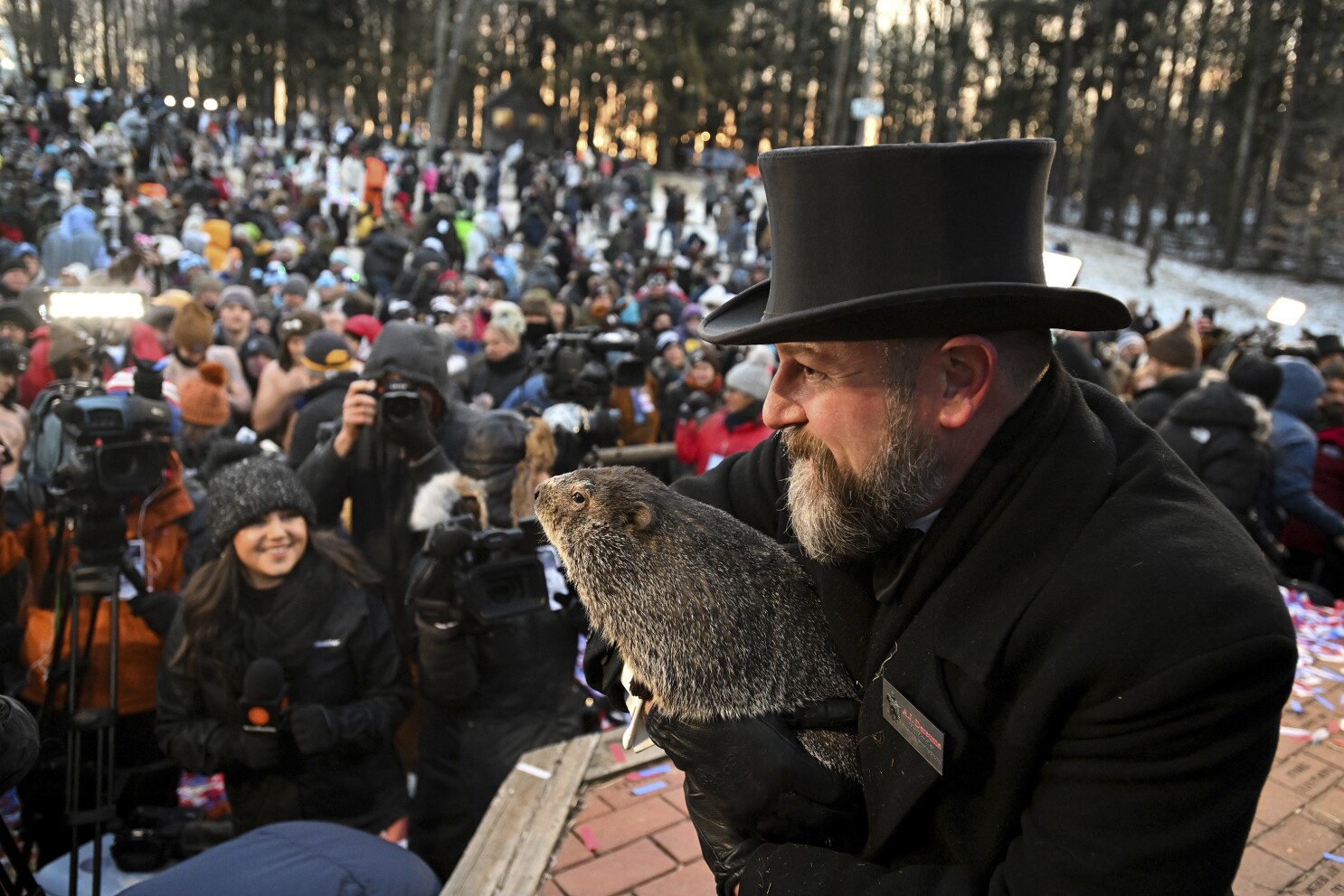
In the quaint town of Punxsutawney, Pennsylvania, February 2nd is not just another winter day; it marks the celebratory tradition of Groundhog Day, a festivity that has captivated thousands of attendees each year at Gobbler’s Knob. The event centers around a singular, furry protagonist: Punxsutawney Phil, a groundhog reputed for his weather prediction prowess. If Phil sees his shadow upon emerging from his burrow, tradition dictates six more weeks of winter; a shadowless sighting, however, signals an early spring.
Origins and Evolution of a Peculiar Tradition

This peculiar tradition finds its roots in the intertwining of ancient celebrations and modern American folklore. Originally tied to the Celtic festival of Imbolc and later Christianized as Candlemas, early February has long been a time of weather prediction. German settlers in Pennsylvania adapted this tradition, replacing the European hedgehog with the native groundhog as their meteorological oracle.
The practice was immortalized by newspaper editor Clymer Freas in 1886, when the Punxsutawney Spirit reported that the groundhog had not seen his shadow, signaling an early spring. This sparked the formation of the Punxsutawney Groundhog Club and the first official Groundhog Day at Gobbler’s Knob the following year. Phil, the soothsaying groundhog, has since become a local and national celebrity, with his forecasts followed by many.
A Groundhog with a Gift: The Economic and Cultural Impact
Phil’s predictions are not only a fun start to February but also a significant economic booster for Punxsutawney. According to Kelly Walker, a spokesperson for the Pennsylvania Tourism Bureau, the event annually generates over $1 million in revenue, with numbers swelling to nearly $5 million when the holiday coincides with a weekend. “The economic impact Pennsylvania’s most unique holiday has on the town of Punxsutawney and surrounding communities is astounding,” Walker noted.

Beyond the economics, Groundhog Day’s success also hinges on its cultural impact. The tradition draws roughly 20,000 people, impressive for a town housing fewer than 6,000 residents. The 2020 celebration set a record with an estimated 40,000 attendees, underscoring the event’s broad appeal.
Debating the Accuracy of Phil’s Predictions
While the tradition is steeped in fun and folklore, the accuracy of Phil’s predictions is a subject of debate. The Inner Circle, a group of local dignitaries who care for Phil and interpret his predictions, claims he has a 100% accuracy rate. More sceptical sources, however, suggest his success rate over the past decade hovers around 50%, with an overall accuracy between 35% and 40%.
Celebrations Beyond Pennsylvania

Groundhog Day has inspired similar festivities across North America, with various regions boasting their own predictive rodents. Notable among them are Shubenacadie Sam in Nova Scotia, Wiarton Willie in Ontario, and Staten Island Chuck in New York, who famously bit Mayor Michael Bloomberg in 2009.
As February 2nd rolls around each year, whether one is a steadfast believer in Phil’s predictions or a cheerful skeptic enjoying the pageantry, Groundhog Day remains a beloved highlight of the winter season. With its deep historical roots and widespread cultural impact, this quirky American tradition continues to charm and engage audiences nationwide, making it a perennial favorite in the calendar of festive American traditions.
